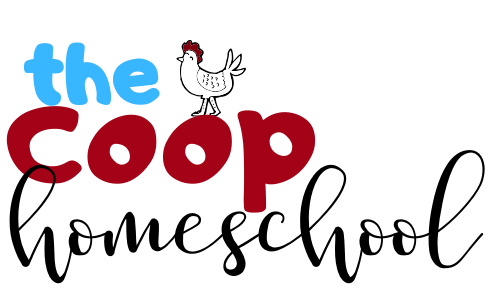Coop Fave: Cursive First
Cursive is a dying art, but it's so good for the brain! This fave is a short and simple curriculum that teaches cursive penmanship for a child’s first exposure to handwriting. It's easy and fun to teach!
Listen on your favorite podcast app or or watch our review here!
It’s a short and simple curriculum written by Elizabeth FitzGerald that teaches cursive penmanship for a child’s first exposure to handwriting, as opposed to print or manuscript, also known as the stick and ball method.
According to Cursive First, historically, handwriting was considered an art. Perfecting the extravagant loops and swirls was given much attention in the 19th century. Then it evolved into a simpler style, reducing the elegance for speed. In the 20th century, children learned a simpler form of cursive as well.
Cursive is a flowing motion to prevent ink blotches since the writing instruments would create puddling if it didn’t keep moving. Then the pencil was invented, and now students had more options. Over time, educators turned to print to teach children to write in the same style they would read in books - thinking it would help them learn to read better. (For more about this, check out Cursive First.)
The Argument for Cursive (according to Cursive First)
It takes 3 controlled movements for lower case cursive letters as opposed to 6 controlled movements in printing lower case letters
Forces one’s hand to move left to right from the beginning and teaches words as a cohesive unit
Allows for continuous flow of thought and thinking ahead while writing
Reinforces the beginning and ending of words, with proper spacing of letters.
You can buy it here.
What it is:
Pamphlet with the research, the why, the readiness indicator list
Flashcards with each letter shown in cursive with the sounds on the back
Tracing sheets (laminate to use with dry erase)
Reading and penmanship curriculum that is based upon visual queues for forming letters on paper
2’oclock letters - a, c, d, g, o, qu,
Uphill - i, u, j, p, w, r, s, t
Loop letters - b, e, f, h, k, l
Hump letters - m, n, v, x, y, z
Say the corresponding phonetics at same time as writing the letter
All sounds for that letter (instead of just the first sound)
First sound is the most used, second sound next, last sound least used
Cursive is the choreography for a letter
3 Reasons why it is a favorite:
Starts every lower case letter on the same line
Easy to teach - can teach all 2’oclock letters - 1 per week
Teach phonetics at the same time
Inexpensive - $15 on ebay, just a small booklet, buy a pad of wide ruled paper with the middle dotted line, staple together (downside is you need to create your workbook). Full price varies, but can buy it new here.
How We Use It:
Use your finger on paint bags
Use dry rice bins and draw letter in the rice
Draw letter in the sand at the beach
Use laminated tracing clocks for tracing with finger and then dry erase pen
Make dotted lines to trace
Use wide lined paper with the dotted line in the middle
Say sounds while draw/write letters
Then once learn letters, start connecting them - with alphabet or small words like hat, cat, bat.
Practice each day for about 5 minutes
Then, at the end, your child can write beautiful words, is able to read cursive and print words, and has developed a skill that is good for their brain. Then, in a couple years, teach print! Both styles of writing are necessary to know.
Additional Info
This curriculum goes with Spell to Write and Read curriculum. That curriculum follows the same method of teaching phonics, and it suggests both methods of handwriting - but chooses Cursive First as their preferred curriculum for learning cursive if you go that route. That’s it!



